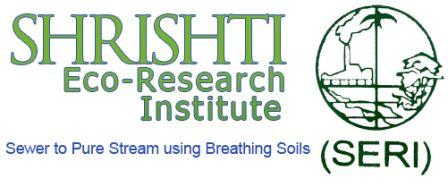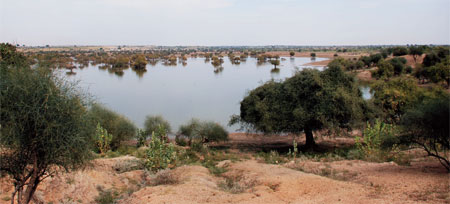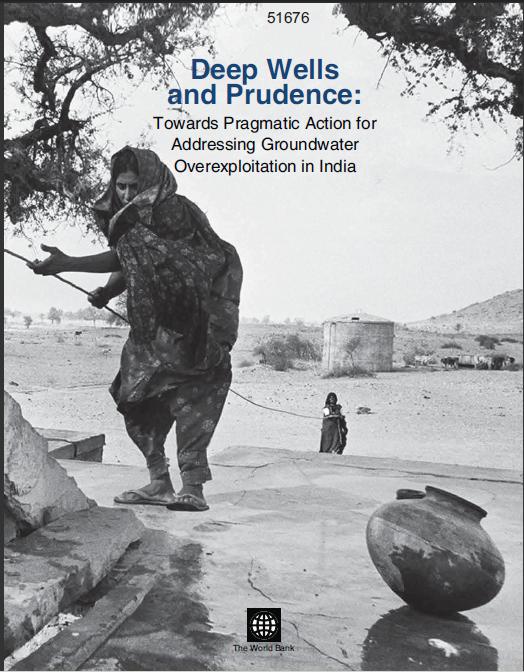Ecology and Environment
Please reverse farcical decision of asking developers to do cumulative impact assessment in Sutlej Basin
Posted on 14 Apr, 2011 06:57 PMTo
Shri Jairam Ramesh
Union Minister of State (IC) of Environment and Forests,
New Delhi
Respected sir,
Shrishti Eco-Research Institute (SERI) is looking for Environmental Officer & Engineer based at Pune
Posted on 14 Apr, 2011 04:50 PM We have vacancies for the post of Environmental Officer & Engineer at Shrishti Eco-Research Institute (SERI), Pune.
We have vacancies for the post of Environmental Officer & Engineer at Shrishti Eco-Research Institute (SERI), Pune.
The candidate should be dynamic and have confidence, command over English language (both speaking & writing) and willing to travel.
Educational qualification - Post Graduate
Discipline - Science/Engineering
River Mandovi cries for help - Video report from WAVE
Posted on 14 Apr, 2011 10:53 AMArticle and Video Courtesy: WAVE India
Author:
Mines in Goa deplete water supply - A film from India Unheard Video Volunteers
Posted on 14 Apr, 2011 10:35 AM
Realisation of the fundamental right to water in rural areas: Implications of the evolving policy framework for drinking water – An article by Philippe Cullet in Economic and Political Weekly
Posted on 13 Apr, 2011 10:20 AMThe fundamental right to water in rural areas is well-established in India, but the actual content of this right has not been elaborated upon in judicial decisions. There is no general drinking water legislation that would provide this missing content.
"A rock and a hard place" and "Tackling the P problem" - Dependence of agriculture on phosphate fertiliser - Issues and the way out - Papers by Soil Association and J Venkateswarlu
Posted on 13 Apr, 2011 12:17 AMThese two reports discuss the dependency of agriculture on phosphorous and the ways to mitigate the problem.
The first report looks at agricultural dependence of chemical nutrients on a global scale and even discusses the potential international political fallout of a reduction in phosphorous. The second report is focused on ways to tackle the dependency on this mineral, in the Indian context. However, both speak of the need for finding alternatives to the current methods of obtaining phosphorous, which is largely through mining.
Water turns the tide - A barren district of Rajasthan is seeing development, thanks to rains last year and floods in 2006
Posted on 12 Apr, 2011 11:31 AMArticle and Image Courtesy: Down To Earth
Author:
A barren district of Rajasthan is seeing development, thanks to rains last year and flood in 2006.
 Administration has revived a man-made pond in Nagarda village that was drying up.
Administration has revived a man-made pond in Nagarda village that was drying up.
Photo: Sayantoni Palchoudhuri
Deep wells and prudence - Towards pragmatic action for addressing groundwater overexploitation in India - A World Bank document (2010)
Posted on 12 Apr, 2011 01:51 AM India is the largest user of groundwater resources in the world. It is estimated that approximately 230 cubic kilometers per year is used annually, this is more than a quarter of the total world consumption from this resource.
India is the largest user of groundwater resources in the world. It is estimated that approximately 230 cubic kilometers per year is used annually, this is more than a quarter of the total world consumption from this resource.
It is in this context that this World Bank report looks at the reasons for this quantum of groundwater usage.
The report delves into socio-economic and political reasons and looks at policies which inadvertently promote so much extraction. The report also analyses various attempts to manage this resource. These attempts range from government and international agency efforts directed to grassroots mobilisations. Finally the report comes out with suggestions to deal with this crisis.
Saraswati – The ancient river lost in the desert - A paper from Current Science
Posted on 12 Apr, 2011 01:26 AMThis Current Science paper uses secondary data to discuss the disappearance of the river Saraswati. The enigma that was the disappearance of this river, which according to the author once upon a time greened Rajasthan and had nurtured civilizations on its shore, brought archaeologists, geologists, geophysicists, and climatologists to find answers. The author uses the body of work created by these scientists to solve the puzzle of the disappearance of the Saraswati.




